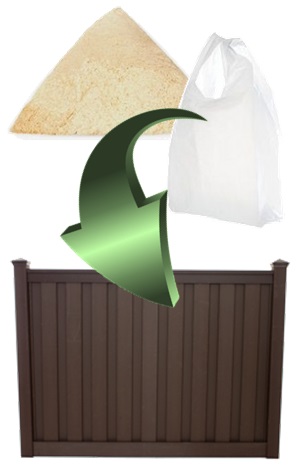How is Trex Different from Vinyl Fencing?

One of the most common questions regarding Trex fencing is how it differs from PVC vinyl fencing. The simple answer is that Trex is actually quite different.
Up until about 25 years ago, there was no major alternative to wood for privacy fencing. During the 1980s and 90s, however, manufacturers experimented with plastics and eventually developed a viable material for fencing. As manufacturing techniques, materials, and designs improved, vinyl fencing became a popular low-maintenance alternative to wood.
More recently, composite fencing has also become an alternative to both wood … and even vinyl. Composites, usually made from a combination of wood and plastic, have beneficial attributes from both products. From wood, composite materials inherit the ability to absorb pigmentation and express a more natural look. From plastic, composites eliminate rot and insect damage, and do not require painting or staining.
While vinyl has been a good solution as an alternative fencing product, there are some limitations, particularly in natural colors/surface finishing, and durability. Composites are typically much stronger, primarily due to their density and thickness. They also hold up better in heat and cold. In terms of strength, Trex has the additional benefit of the interlocking picket design which creates added strength (more on that in a future post). Among composites, Trex leads the industry with asthetic appeal. Rather than take the approach of emulating a traditional stockade style fence, Trex fencing was designed based on the results of a national a survey in which consumers indicated a preference for a “cap-and-trim” and “board-on-board” look.
Midwest Fence in Minnesota has written more extensively on this topic. You might find it interested to get a contractor’s perspective because they work directly with consumers like you: “PVC Vinyl Vs. Trex Composite Fencing.”
